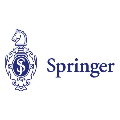Confounding bias and selection bias are two significant challenges to the validity of conclusions drawn from applied causal inference. The latter can arise through informative missingness, wherein relevant information about units in the target population is missing, censored, or coarsened due to factors related to the exposure, the outcome, or their consequences. We extend existing graphical criteria to address selection bias induced by missing outcome data by leveraging post-exposure variables. We introduce the Sequential Adjustment Criteria (SAC), which support recovering causal effects through sequential regressions. A refined estimator is further developed by applying Targeted Minimum-Loss Estimation (TMLE). Under certain regularity conditions, this estimator is multiply-robust, ensuring consistency even in scenarios where the Inverse Probability Weighting (IPW) and the sequential regressions approaches fall short. A simulation exercise featuring various toy scenarios compares the relative bias and robustness of the two proposed solutions against other estimators. As a motivating application case, we study the effects of pharmacological treatment for Attention-Deficit/Hyperactivity Disorder (ADHD) upon the scores obtained by diagnosed Norwegian schoolchildren in national tests using observational data ($n=9\,352$). Our findings support the accumulated clinical evidence affirming a positive but small effect of stimulant medication on school performance. A small positive selection bias was identified, indicating that the treatment effect may be even more modest for those exempted or abstained from the tests.
翻译:暂无翻译



